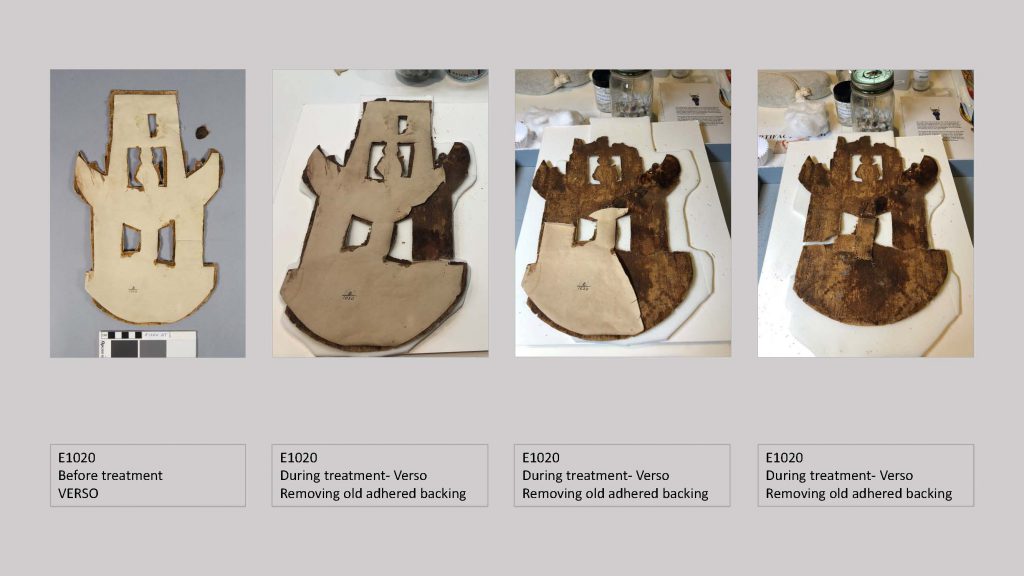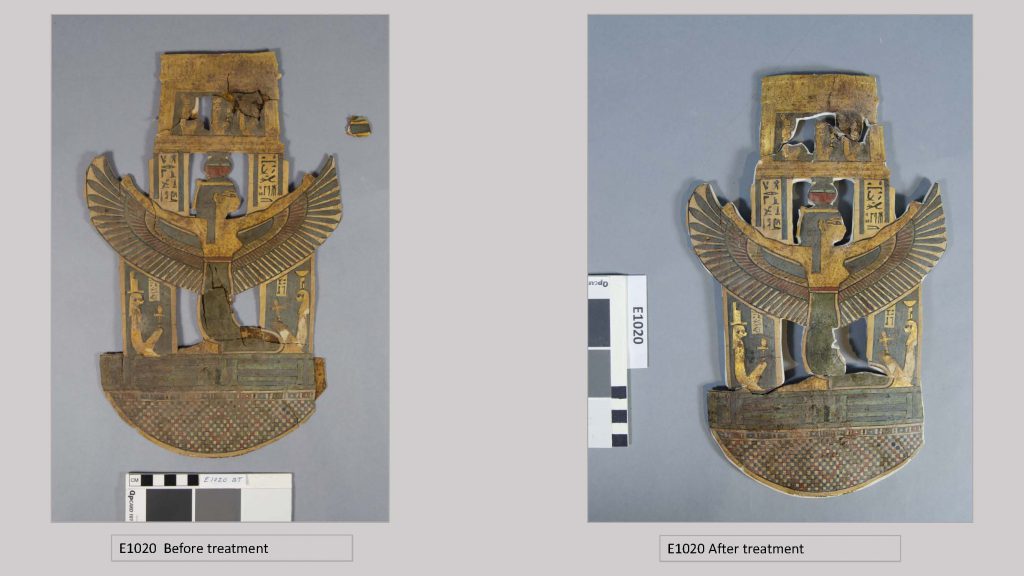Working from home – this is not a foreign concept for many of us since the outbreak of the novel coronavirus in the US earlier this year. But how do conservators – museum staff who regularly work in close contact with museum artifacts – work from home?
It turns out, there are a lot of things we can do. We are, after all, creative people, and adaptable, and often experienced in working in less-than-ideal circumstances. We also always have a backlog of job-related tasks that are easy to push aside while we are working at the Museum, like labeling and archiving photos and improving our documentation standards. To give you a glimpse into how some of us in the Conservation Department have been working from home, I asked several of my colleagues to weigh in:
From conservator Julie Lawson:
As was the case for many, working from home began with a “crash course” in navigating new (to me) adventures in virtual meetings, guest-lecturing, remote desktops, and remote IT colleagues. The pause in an often relentless exhibit schedule has given me a chance to catch up on some old record-keeping, and many current resources that would likely have been missed such as international web presentations of conservation projects. More lately, I’ve been engaged in what it means to be personally anti-racist, the impacts of racism on museums fields and individuals, and what I can and should do about it. Listening online to Black museum directors, curators, and archaeologists, for instance, is giving me a new and necessary perspective to take to work in an anthropology museum and beyond.
Of course, a thread running through the last several months has been presentations, documents, protocols, questions and updates on Covid-19’s effect on our and other museums, the Penn campus and life in general. To take breaks from all that and take advantage hours spent not commuting to the Museum, I’ve been expanding my garden beds and trying out new things like growing 6 foot tall sunflowers from seeds, followed by some outdoor ‘conservation treatment’ with a recycled spray bottle of homemade insecticidal soap solution. Turns out that spotted lantern fly nymphs are a major agent of garden plant deterioration!

From conservator Tessa de Alarcón:
Like everyone I have been entering old treatment reports into KE EMu, our collections database, and doing a lot of data clean-up. Some of the data clean-up included making sure X-ray images in EMu have the proper metadata (the red arrows in the images below indicate a metadata fix that I made to one image). Without this fix, these images were not pushing to the public website properly.

Another project I worked on from home was processing some RTI data. In my examination of this ancient Egyptian bronze plaque (E11528), I observed that it has modern paint over the ancient inscription. In weighing a decision about whether or not to remove the modern paint, I told the curators that I could do RTI on the plaque to better understand how legible the inscription would be without the paint. The RTI images do seem to show where the paint does not line up well with the actual incised inscription.

From conservator Julia Commander:
Working from home is a great opportunity to dive into materials from related fields – even aerospace design! Webinars and videos like this one, showing how to trim carbon fiber components with an oscillating multitool, help as we develop protocols for making large-scale interfaces for Ancient Egyptian column drums.

From conservator Jessica Betz Abel:
During the quarantine, I’ve mostly been striving to make perfectly symmetrical Hungarian pizzelles using my grandmother’s handwritten recipe. When I wasn’t gently tapping off the excess crust around the sides of the pizzelles, I spent the early part of the summer on my presentation concerning the desalination of Egyptian limestone using agarose gel for the American Institute of Conservation‘s 2020 virtual annual meeting.

From Head Conservator Lynn Grant:
During the time the Museum was closed, I got to go in several times to check on the condition of the artifacts on display and in storage (this was just an extra check: our Security staff did regular rounds all through the time we were closed). With lights off to protect the artifacts, it was a spooky flashlight experience in places.

Of course, the Penn Museum is now open to the public, and many of us are getting back into a routine that takes us to work in person several days a week! So we have less time for baking and gardening, but we are happy to be back with the collection and we look forward to continuing to update the blog with our ongoing work.






















































